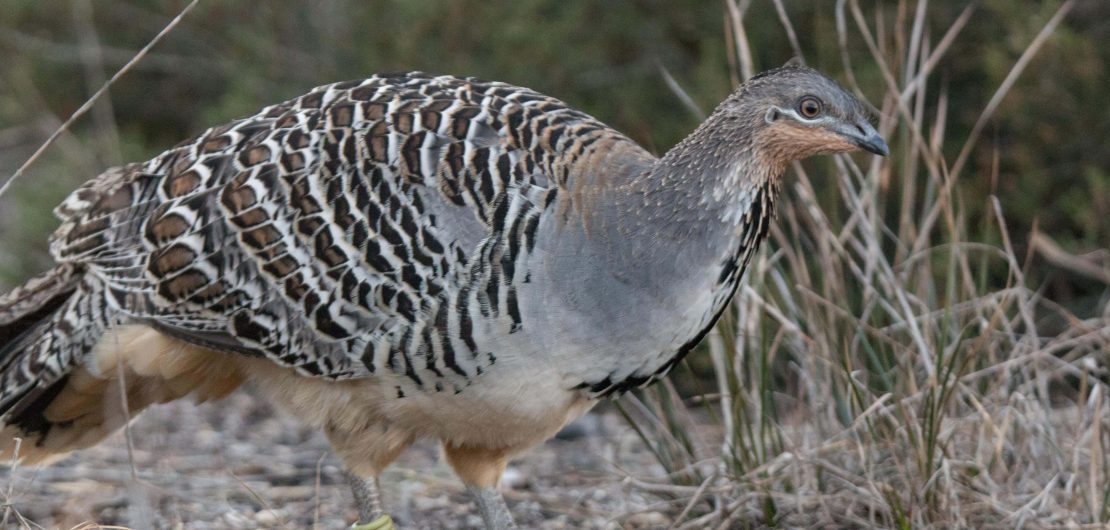The Malleefowl, a captivating ground-nesting bird native to Australia, finds itself in a critical predicament within the densely-populated state of New South Wales. Despite a total population of 25,000 individuals across Australia, a mere 2,800 remain in this particular region. The species confronts formidable challenges to its survival, primarily stemming from the menacing influence of feral cats and invasive foxes. These predators have significantly disrupted the delicate balance of the ecosystem that the Malleefowl evolved within, posing a serious threat to their reproductive strategy. With a mere 2% survival rate for Malleefowl chicks in the wild, urgent interventions are imperative to rescue this species from the brink of endangerment in New South Wales.
Farmers Take the Lead in Conservation
In a remarkable twist, farmers from the Rankins Springs area near West Wyalong have emerged as unsung heroes in the conservation narrative of the endangered Malleefowl. Faced with the challenges posed by predators and a dishearteningly low survival rate of Malleefowl chicks in the wild, these farmers have orchestrated collective efforts. Their initiative involves the systematic collection and incubation of Malleefowl eggs, a proactive measure that extends a crucial lifeline to this struggling species. Through their dedication and pragmatic approach, these farmers have become instrumental in reshaping the trajectory of Malleefowl conservation, showcasing the pivotal role that local communities can play in safeguarding biodiversity.
The Malleefowl’s Unique Nesting Behavior
Delving into the ecological intricacies of the Malleefowl unveils the unique nesting behavior that defines their existence. As ground-nesting birds belonging to the Galliformes family of “mound builders,” Malleefowl rely on intricate plumage for camouflage. In winter, males meticulously construct nesting mounds, typically beneath the shade of mallee trees. These mounds, towering up to 2 feet in height, serve as the cornerstone of their reproductive strategy. Understanding this intricate nesting behavior is essential to grasp the challenges these birds face and the significance of the conservation efforts initiated by the farmers.
Mal Carnegie’s Vision
At the forefront of the Malleefowl conservation initiative stands Mal Carnegie, a stalwart Australian wildlife champion. As the visionary founder of the Lake Cowal Foundation, Carnegie has orchestrated a significant step forward in the protection of these endangered birds. His strategic move to secure support from a nearby gold mining company has led to the establishment of a crucial endowment. This financial backing serves as the backbone of efforts dedicated to preserving the unique ecosystem surrounding Lake Cowal, with a targeted emphasis on ensuring the survival and flourishing of the Malleefowl population.
A Farmer-Driven Strategy
A pivotal chapter in Malleefowl conservation unfolds as farmers in the Rankins Springs area actively champion a strategy of catching Malleefowl eggs from their intricate nesting mounds. This farmer-driven initiative, spearheaded by Mal Carnegie, goes beyond collection, extending to the meticulous incubation of eggs and the subsequent release of chicks into a feral-free enclosed environment. With a clear focus on countering the pervasive threats posed by predators, particularly feral cats and invasive foxes, this program aligns with Carnegie’s overarching vision. The collective efforts of farmers, guided by Carnegie’s leadership, significantly enhance the prospects of Malleefowl reaching maturity and contributing to the resurgence of their population.
Overcoming Past Challenges
The triumph of the catch, incubate, and release program introduces a compelling and unconventional perspective into wildlife conservation efforts. What makes this success story particularly intriguing is the infusion of farmer logic into a domain traditionally led by scientists and conservationists. Armed with practical insights gained from years of working the land and a profound dedication to safeguarding their environment, farmers have played a pivotal role in enhancing the effectiveness of incubation and release strategies for the Malleefowl.
This farmer-driven logic not only breathes new life into a previously unsuccessful approach but also highlights the transformative impact that community involvement and practical expertise can have in the realm of wildlife conservation. The synergy between traditional farming wisdom and conservation science emerges as a powerful force, showcasing the potential of collaborative efforts in overcoming challenges and steering endangered species towards recovery and resilience.
Success Stories and Future Prospects
As the dust settles on the farmer-driven conservation efforts, promising results illuminate the horizon as a beacon of hope for the endangered Malleefowl. The sighting of juveniles within the enclosed environment marks a significant triumph, amplifying the likelihood of their survival tenfold. Farmers, exemplified by dedicated individuals like Rodney Guest, who devoted two decades to mitigating threats from feral cats and foxes, express profound satisfaction in witnessing positive outcomes.
Conclusion
The unfolding success of this initiative not only signifies a resounding victory for Malleefowl but also imparts invaluable lessons for the future of wildlife conservation. It underscores the transformative impact of community engagement and the fusion of traditional wisdom with innovative thinking. As the program progresses, it serves as a testament to the potent synergy between local efforts and broader conservation goals, offering a hopeful path forward for safeguarding endangered species and fostering ecological resilience.

